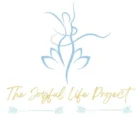Childhood is a formative time when we develop our understanding of the world, ourselves, and our relationships with others. Unfortunately, this period can also be marked by wounds—emotional, psychological, or even physical—that leave lasting scars. Healing these childhood wounds is essential for achieving inner peace, emotional well-being, and a sense of wholeness in adulthood.
Understanding Childhood Wounds
Childhood wounds can take many forms. They might stem from traumatic events, such as abuse or neglect, or from less overt but equally impactful experiences, like emotional abandonment, constant criticism, or unmet needs. These wounds can shape how we see ourselves and interact with the world, often manifesting in adulthood as low self-esteem, anxiety, depression, difficulties in relationships, or a pervasive sense of unworthiness.
It’s essential to recognize that these wounds aren’t simply “in the past.” They can continue to affect us in the present, influencing our thoughts, emotions, and behaviors in ways we might not even realize.
The Importance of Healing
Healing childhood wounds is not about blaming the past or dwelling on negative experiences. Instead, it’s about acknowledging the impact of those experiences and taking active steps to heal and grow. Without addressing these wounds, we may find ourselves stuck in patterns that hinder our ability to live fulfilling lives, maintain healthy relationships, and realize our true potential.
Steps to Healing Childhood Wounds
Acknowledge the Wounds
The first step in healing is acknowledging that the wounds exist. This requires honesty and courage, as it can be painful to confront past experiences that have caused deep hurt. Journaling, therapy, or even talking with a trusted friend can help bring these wounds to the surface and allow you to start processing them.
Understand the Impact
Once you’ve acknowledged the wounds, it’s important to understand how they’ve shaped your life. Reflect on how these early experiences have influenced your beliefs, behaviors, and emotional responses. For example, you might notice that fear of abandonment leads you to cling to relationships or that low self-worth makes you hesitant to pursue your goals. Understanding these connections is key to breaking free from limiting patterns.
Practice Self-Compassion
Healing requires self-compassion. Recognize that the wounds you carry are not your fault, and allow yourself to feel the emotions that arise without judgment. Treat yourself with kindness, as you would a child who has been hurt, and remind yourself that healing is a process that takes time and patience.
Seek Professional Support
Working with a therapist or counselor can be incredibly beneficial when healing childhood wounds. Professionals trained in trauma and emotional healing can help you navigate the complexities of your experiences, offer guidance, and provide tools for coping and growth. Therapeutic approaches such as cognitive-behavioral therapy (CBT), eye movement desensitization and reprocessing (EMDR), or inner child work can be particularly effective.
Reparent Yourself
Reparenting is a concept that involves giving yourself the care, nurturing, and validation that you may have missed out on during childhood. This can include setting healthy boundaries, affirming your worth, and meeting your own emotional needs in a way that honors your inner child. Reparenting helps you develop a stronger, more supportive relationship with yourself, fostering healing and resilience.
Release and Forgive
Forgiveness is often a crucial part of the healing process, not necessarily for those who hurt you but for yourself. Holding onto anger and resentment can keep you tethered to the past, while forgiveness allows you to release the emotional burden and move forward. Forgiveness doesn’t mean excusing harmful behavior; it’s about freeing yourself from pain’s hold over you.
Create New Narratives
You can create new narratives about yourself and your life as you heal. Instead of seeing yourself as a victim of your past, you can view yourself as a survivor with strength and resilience. Rewriting your story empowers you to move beyond your wounds and embrace a future filled with possibility.
Embracing Wholeness
Healing childhood wounds is not about erasing the past but integrating it to allow you to live more fully in the present. By acknowledging your wounds, understanding their impact, and taking steps toward healing, you can reclaim your sense of self, develop healthier relationships, and find greater peace and fulfillment.
Remember, healing is a journey, not a destination. Be patient with yourself, celebrate your progress, and know that each step you take brings you closer to a place of wholeness and inner peace.

